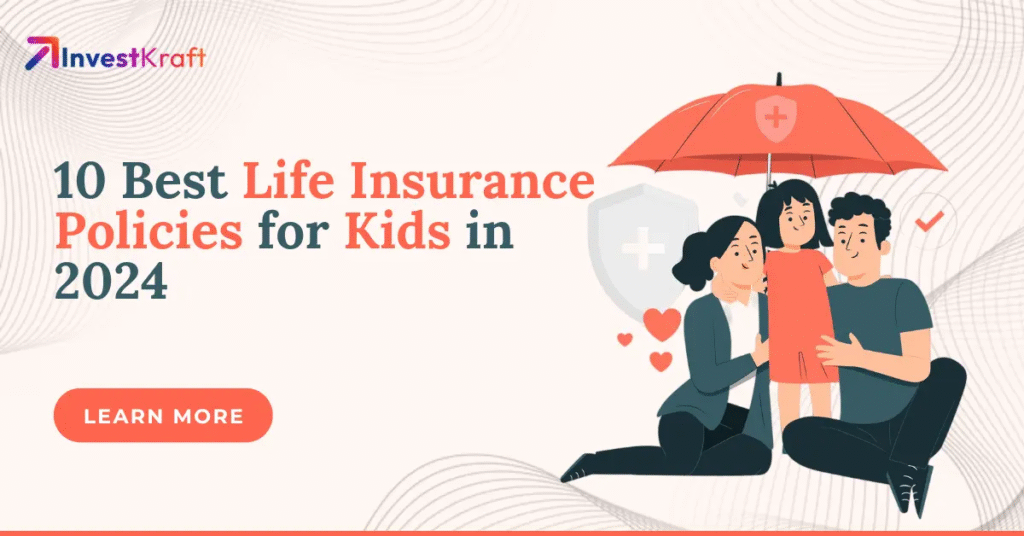Options for U.S. Families in 2025 Life insurance is a critical tool for U.S. families seeking to secure their financial future without straining their budgets. With rising costs of living and economic uncertainties in 2025, finding affordable life insurance is more important than ever. This article explores the most cost-effective life insurance options for families, focusing on term life, whole life, and group policies. Drawing from recent industry analyses, we highlight top providers, their offerings, and strategies to keep premiums low, ensuring families can protect their loved ones without breaking the bank.
Why Life Insurance Matters for Families in 2025
Life insurance provides a financial safety net, replacing lost income and covering expenses like mortgages, debts, and education costs if a breadwinner passes away. According to the Insurance Information Institute, the primary reasons families purchase life insurance include income replacement, debt repayment, and covering end-of-life expenses like funerals, which can cost upwards of $10,000. In 2025, with inflation and economic pressures impacting household budgets, affordable policies are essential. Term life insurance, in particular, is a popular choice due to its low cost, with average premiums for a 20-year, $500,000 policy for a healthy 40-year-old at just $26 per month, per NerdWallet’s analysis.
However, misconceptions about cost deter many families—LIMRA’s 2023 study found that over half of Americans overestimate life insurance expenses, believing it’s unaffordable. This article aims to demystify options, focusing on budget-friendly policies from top-rated insurers, their features, and tips for securing the lowest rates.
Top Affordable Life Insurance Providers for 2025
1. Nationwide
Best for Overall Affordability
Nationwide tops U.S. News’ 2025 list as the cheapest life insurance provider, offering a variety of term, universal, and whole life policies. Its Life Essentials term policy is particularly budget-friendly, with no medical exam required, only health-related questions.
Standout Features:
- Low Premiums: Competitive rates, with term life policies starting at around $20–$30 per month for a healthy 30-year-old for $500,000 coverage.
- Flexible Riders: Options like Long-Term Care, Accidental Death Benefit, and Waiver of Premium allow customization without significantly increasing costs.
- Online Application: The Life Essentials policy can be applied for online, simplifying the process for busy families.
Drawbacks: Quotes for universal and whole life policies require an agent, and customer service lacks live chat.
Average Premium: Around $26 per month for a 20-year, $500,000 term policy for a healthy 40-year-old.
2. Guardian
Best for Low-Income Families
Guardian is a top pick for low-income families, offering rates as low as $14 per month for minimum coverage, per QuickQuote.com. It’s highly rated by NerdWallet and U.S. News for its affordability and flexibility, especially for those with preexisting conditions like HIV.

Standout Features:
- Affordable Rates: Minimum coverage starts at $14/month, with full coverage at $30 for $100,000 policies.
- Flexible Terms: Offers term policies from 10 to 30 years, ideal for families needing coverage during high-earning years.
- Progressive Underwriting: More lenient for conditions like HIV or past IV drug use, making it accessible for diverse families.
Drawbacks: Fewer additional benefits compared to competitors, and coverage options may be less diverse.
Average Premium: $15–$30 per month for $100,000 term coverage for healthy individuals aged 18–35.
3. State Farm
Best for Customer Satisfaction
State Farm, ranked No. 1 for customer satisfaction in J.D. Power’s 2024 Life Insurance Study, offers affordable term, whole, and universal life policies. It’s a top choice for low-income families, with rates starting at $12 per month.
Standout Features:
- Low Rates: Term policies start at $12/month for low-income families, with Guaranteed Issue Final Expense policies for burial costs.
- Wide Availability: Operates in all states except Massachusetts, New York, and Wisconsin, where its affiliate offers similar policies.
- High Satisfaction: Fewer customer complaints than expected for its size, per NAIC data.
Drawbacks: Term policies cannot be purchased online, requiring agent interaction.
Average Premium: $16–$18 per month for a 10-year, $250,000 term policy for a healthy 40-year-old.
4. Pacific Life
Best for Flexible Coverage
Pacific Life offers affordable term and universal life policies, with the option to convert term to permanent coverage without a medical exam if done before age 70. It ranks highly in U.S. News’ affordability ratings.
Standout Features:
- Conversion Flexibility: Term policies can be converted to permanent policies, ideal for growing families.
- No-Exam Options: Some policies don’t require a medical exam, lowering barriers for busy or health-challenged applicants.
- High Coverage Limits: Term coverage starts at $50,000 and can exceed $3 million.
Drawbacks: No online applications; quotes require an agent.
Average Premium: $47 per month for a 20-year, $1 million term policy for a 35-year-old female in the Standard Plus risk class.
5. Transamerica
Best for Young Families
Transamerica stands out for its low-cost term policies, offering a 20-year, $100,000 policy for as little as $9 per month for healthy individuals aged 18–35. It’s a top choice for young families, per Insuranceopedia.
Standout Features:
- Extremely Low Rates: Among the lowest, starting at $9/month for $100,000 coverage.
- Strong Financial Stability: Excellent AM Best ratings ensure reliability.
- Simple Policies: Straightforward term options suit budget-conscious families.
Drawbacks: Limited rider options compared to competitors like Nationwide.
Average Premium: $9–$18 per month for a 10–20-year, $100,000–$250,000 term policy for healthy young adults.
Types of Affordable Life Insurance for Families
Term Life Insurance
Term life is the most cost-effective option, covering a set period (10–30 years) and paying a death benefit if the policyholder dies within that term. It’s ideal for families with temporary needs, like covering a mortgage or children’s education. Average costs range from $20–$30 per month for a healthy 30-year-old for $500,000 coverage. Providers like Corebridge Direct offer term policies with no medical exam and coverage up to $2 million.
Whole Life Insurance
Whole life provides lifelong coverage and builds cash value, but it’s pricier, averaging $400–$475 per month for a healthy 30-year-old. For families, it’s suitable for long-term goals like estate planning. USAA offers whole life policies from $2,000 to $10 million, with no medical exam for some policies.
Group Life Insurance
Often provided through employers, group life insurance is free or low-cost but may offer limited coverage (e.g., $50,000). It’s a good starting point but often insufficient for families with dependents.
Children’s Life Insurance
Policies like American Family’s DreamSecure Children’s Whole Life ($25,000–$75,000 coverage) or Gerber’s Grow-Up Plan ($5,000 starting coverage) lock in low rates and guarantee future insurability. Premiums start as low as $3.70 per month.
Survivorship Policies
These cover two people (e.g., spouses) and pay out after both pass, often more affordable than two separate policies. Prudential’s survivorship policies include a no-lapse guarantee.
Strategies to Secure Affordable Life Insurance
- Choose Term Life: Term policies are significantly cheaper than whole or universal life, ideal for families needing coverage during high-earning years.
- Buy Young: Premiums are lower for younger, healthier individuals. A 30-year-old non-smoker pays around $117 annually for $300,000 term coverage, versus $580 for a 50-year-old.
- Compare Quotes: Use tools like Policygenius or AccuQuote to compare rates from multiple insurers.
- Opt for No-Exam Policies: Providers like Nationwide and Corebridge offer no-exam term policies, saving time and potentially lowering costs for healthy applicants.
- Maintain a Healthy Lifestyle: Lower weight, blood pressure, and cholesterol can reduce premiums. Smokers pay significantly more due to health risks.
- Leverage Group Coverage: Supplement employer-provided group life with a personal term policy for adequate coverage.
- Add Riders Sparingly: Riders like accidental death or long-term care increase costs. Choose only those essential for your family’s needs.
- Lock in Rates Early: Level-term policies ensure premiums remain constant, protecting against future increases.
Factors Affecting Life Insurance Costs
- Age and Health: Younger, healthier individuals pay less. A 20-year-old may pay $14–$19 per month for a 30-year, $250,000 term policy.
- Coverage Amount: Higher coverage (e.g., $1 million vs. $100,000) increases premiums. Use a life insurance calculator to determine needs.
- Policy Type: Term life is cheapest, followed by universal, with whole life being the most expensive.
- Gender: Females typically pay less due to longer life expectancies. A 35-year-old female pays about $47/month for a $1 million, 20-year term policy, per U.S. News.
- Lifestyle: Smoking or high-risk activities (e.g., skydiving) raise premiums.
Trends in Life Insurance for 2025
- Rising Demand for Term Life: Posts on X highlight term life as a simple, affordable option, with companies like Primerica promoting its accessibility.
- Digital Tools: Insurers like Guardian offer easy online quotes, streamlining the application process for busy families.
- Focus on Low-Income Families: Providers like Transamerica and State Farm emphasize low-cost options, with rates as low as $9–$12 per month for minimal coverage.
- No-Exam Policies: Increasingly popular, these policies from Corebridge and Nationwide cater to families seeking quick, hassle-free coverage.
Tips for Choosing the Right Policy
- Assess Family Needs: Use the DIME method (Debt, Income, Mortgage, Education) to calculate coverage needs, typically 10 times your annual income.
- Check Financial Strength: Opt for insurers with strong AM Best ratings (e.g., A- or higher for Guardian, Nationwide).
- Read Policy Terms: Ensure riders and exclusions align with your needs, especially for chronic illness or long-term care riders.
- Consult an Agent: For complex needs, agents from New York Life or Northwestern Mutual can tailor policies.
- Shop Annually: Compare quotes before renewal to avoid rate hikes, as premiums can increase with age or health changes.
Conclusion
In 2025, affordable life insurance is within reach for U.S. families, with term life policies from Nationwide, Guardian, State Farm, Pacific Life, and Transamerica offering low-cost options starting at $9–$30 per month. By choosing term life, buying young, comparing quotes, and maintaining a healthy lifestyle, families can secure robust coverage without financial strain. These providers balance affordability with flexibility, ensuring families can protect their financial future, cover debts, and provide peace of mind. For personalized quotes, visit insurer websites or use comparison tools like Policygenius to find the best fit.



